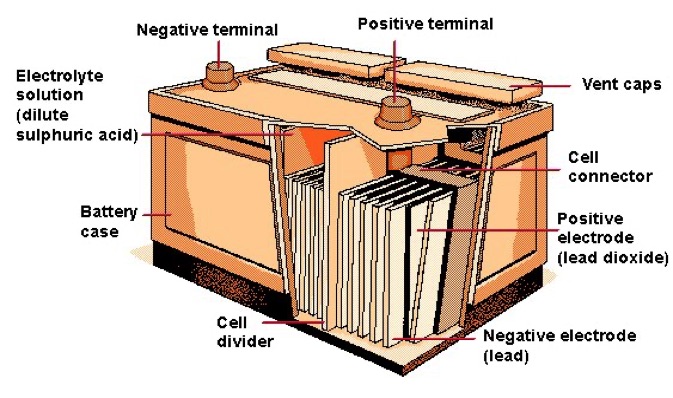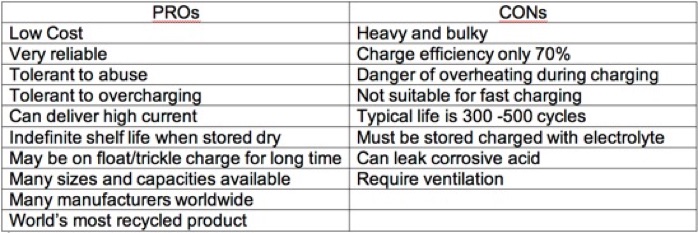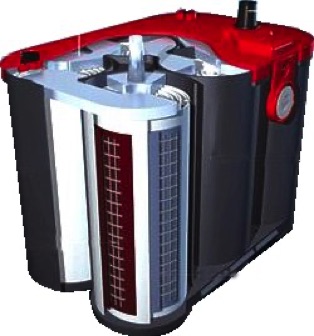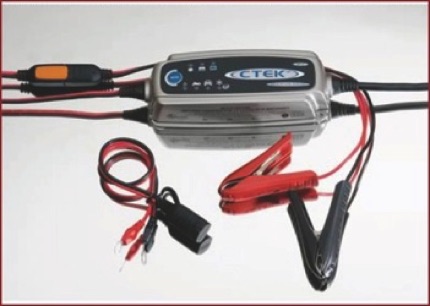

Published in the October 2010 issue of “Die Porsche Kassette”
Our car’s batteries use technology invented in 1860 by Gaston Planté and they are of the 12 volt, lead-acid, starting type.
The traditional 12 volt lead acid battery is actually made up of six identical 2 volt cells. Each cell is made up of lead plates of different composition, immersed in dilute sulphuric acid.
Lead dioxide (PbO2) plates are connected to the positive terminal of the cell and react with the sulphuric acid (H2SO4) to form lead sulphate and give up electrons.
The negative terminal of the cell is connected to pure lead (Pb) plates which react with the sulphate ions to also form lead sulphate.
The pure lead plates supply two positive charges and are left negatively charged.
The stream of electrons passing from the lead-oxide plates to the pure lead plates is the electric current generated by the cell.
When the battery is recharged, the lead sulphate in each cell is broken down resulting in lead dioxide being redeposited onto the positive electrode, and lead being deposited onto the negative electrode.
These types of batteries, like everything else, have their pros and cons.

Starter batteries are made up of many thin lead plates which enable them to discharge a lot of energy very quickly which is what’s required by a vehicle’s starter motor which must turn over the engine in order to start it.

These types of batteries, like everything else, have their pros and cons.

In order to prolong the battery’s life you need to charge it immediately after use. They will last longer with partial discharge rather than a full discharge. The best charging method is a constant voltage followed by a float charge. Unfortunately a fast charge is not possible.
The vehicle’s alternator is actually the battery’s charger. As soon as the car’s engine starts, the alternator starts sending an electric current back to the battery, which keeps it fully charged and ready for the next engine start.
When charging, be it by the vehicle’s alternator or by an outside charger the battery slowly looses water due to evaporation and therefore needs periodic maintenance. Regularly check the volume of electrolyte in each cell and top off as necessary with distilled water.
Porsches come from the factory with Moll batteries in place.
Depending on conditions and use a battery should last between 4 and 7 years.
When replacing you can replace with an another OEM Moll battery, or you can opt for any of a myriad of suppliers which offer much cheaper alternatives.
Just be sure that you install the correct size, not only physically, but also electrically.
Make sure that the new battery has close to the same starting capacity measured in CCA (cold cranking amps), the correct base and shell size which will allow for the secure placement as well as the correct position of the terminals so that the car’s battery wires can reach them.
There’s newer battery technology on the market (Absorbed Glass Matt - AGM) which requires no maintenance and has eliminated quite a few of the cons of the traditional lead-acid battery, such as: has better weigh-to-power ratio, can be placed in any position, even upside down, higher tolerance to vibration and shock, will not leak or out gas, needs no vent, is completely sealed, has a lower rate of self-discharge, and lasts longer.
In these AGM type batteries the lead plates and the separator are wound and tightly compressed into a cell tube so they can’t move, shed, or break even in severe shock and vibration applications and the separator, which is an absorbent glass matt, holds the electrolyte like a sponge so it can’t spill. Their main drawbacks are higher cost and unique shape which needs special adaptors and plates to safely mount in our vehicles.

If you are storing a battery for an extended period, it is recommended that it be stored in a cool, dry place, off the floor and connected to a smart charger such as the CTEK Multi US 3300 which will apply a constant voltage until the battery fully charges, then maintains a float or trickle charge to keep it at its peak.

If you want to find out more about Batteries and how to make them last longer in your Porsche, please visit our website: www.PedrosGarage.com.
Happy Boxstering,
© 2010 Technolab/PedrosGarage.com


